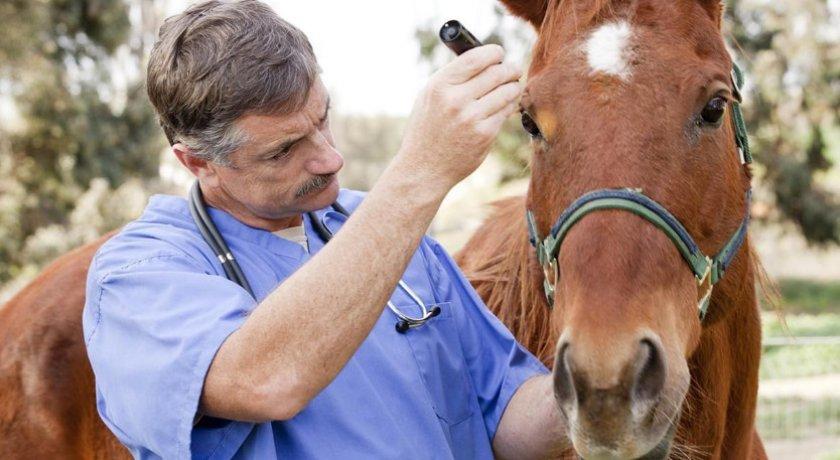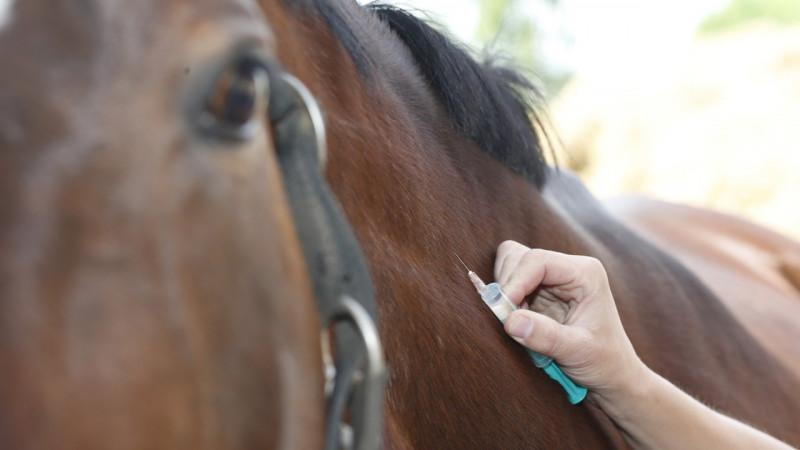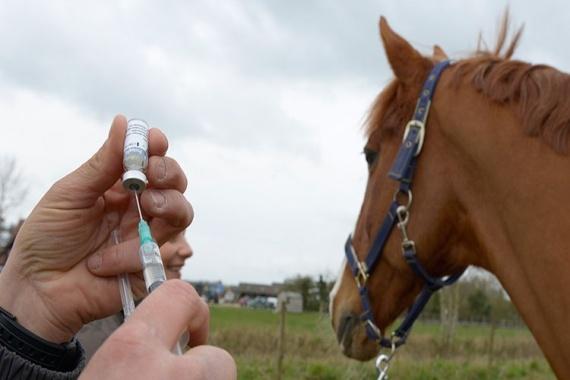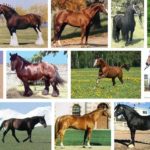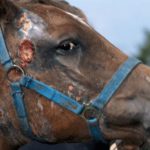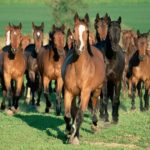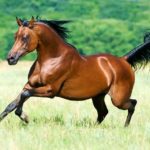The development of influenza in horses is considered a common disorder that leads to negative consequences. To avoid such problems, it is worth immunizing animals in a timely manner. If symptoms of pathology appear, it is recommended to take immediate action. The veterinarian must make an accurate diagnosis and select effective treatment.
Description of the disease and its danger to horses
Influenza in horses is caused by type A strains.The disease has a high degree of susceptibility in an unvaccinated horse that has not had previous contact with a viral infection. The causative agent of the pathology is considered to be an RNA-containing virus, which is sensitive to high temperatures. At low temperatures it remains in the external environment for a long time. Chemicals have a detrimental effect on the infection.
Under natural conditions, all horses suffer from the flu, regardless of age, gender and breed. The most complex course is observed in foals. Sick animals become sources of infection. Infection occurs through airborne droplets if infected horses are in the same room as healthy ones.
Flu develops at any time of the year. However, this most often occurs in spring and autumn. The incidence rate is 10-100%. This parameter depends on the susceptibility of the immune system to the influence of this type of pathogen, the conditions under which the horses are kept and their use.
The risk of death depends on the severity of complications, which are usually observed in 0.5-10% of cases.
Causes and symptoms
The development of the disease is caused by several strains of the influenza A virus. The pathogens that provoke the disease were first identified in 1956. Equine virus-1 causes damage to the heart muscle. In this case, horse virus-2 is considered systemic and causes a more severe course.
The virus is spread by infected and coughing horses. The development of the disease can also be caused by the use of contaminated buckets, brushes and other equipment. The influenza virus causes symptoms by replicating in respiratory epithelial cells. This leads to damage to the trachea and bronchi.
Diagnosis and treatment
The duration of the incubation period during the natural course of the disease is 1-6 days. Sometimes a shorter duration is observed, which does not exceed 18-20 hours. With the development of pathology in horses, depression and inflammatory damage to the mucous membranes of the eyes and nasal cavity are observed. A slight cough also appears, and the peripharyngeal lymph nodes become enlarged.
After this, the temperature rises quickly. It reaches 39.5-40 degrees and lasts 1-4 days. At this stage, there is a risk of developing a dry, painful cough. As the animal moves, this symptom increases. Sick horses are depressed and their appetite worsens. In this case, an increase in heart rate to 65-75 beats per minute is observed.
Symptoms of the disease vary. They depend on the characteristics of keeping and using horses. Of no small importance is the state of the immune system and the biological characteristics of the pathogen. In conditions of low temperature and high humidity, the course of the flu worsens. In this case, a secondary bacterial infection is often associated.
In terms of severity, influenza can be typical, atypical and malignant. An atypical type of the disease develops when infected with a virus of the first serotype. In this case, animals are faced with severe serous rhinitis and a shallow cough. There may not be a fever.
If the pathology is caused by a virus of the second serotype, it has a more complex course. The infection often has a malignant course. In this case, horses develop a dry and painful cough. At the same time, the animal lowers its head, and a mucous secretion is released from the nose. A study of the heart's function helps identify arrhythmias and other disorders.Even after recovery, cardiac abnormalities persist for several months. The strenuous work of infected horses can cause death.
If secondary microflora is added, the cough becomes dull and painful. When breathing, you can hear wet or dry wheezing. The elevated temperature may persist for 1-2 weeks. Indicators of a secondary infection include mucopurulent nasal discharge, which requires the use of antibiotics.
To make an accurate diagnosis, epidemiological information, clinical picture and laboratory test results are used. The virus can be detected in the first 3 days of illness. If the temperature rises, the veterinarian should take nasal swabs. They are typed with specific serums. Virus circulation can be confirmed by increasing the titer of antihemagglutinins by 2-4 times.
There are no specific treatments for the disease. The infected animal must be isolated. It needs to be freed from stress and provided with feed that is easily digestible.
In case of bacterial infection, antibiotics and sulfonamides are indicated. Symptomatic treatment and drugs to increase general resistance are also prescribed.
Flu vaccine
To prevent horses from becoming infected with influenza, it is necessary to immunize animals in a timely manner.
Release form, composition and principle of action
Horses are vaccinated with an inactivated polyvalent vaccine. It is a mixture of 2 strains – serotypes I and II. The drug is sold in sterile glass bottles. The principle of action of the product is based on creating immunity to viral infection. This effect is achieved 14 days after the second vaccination.The vaccine does not cause complications and has no therapeutic properties.
In what cases is it used?
The indication for the use of the substance is the need for preventive vaccination of horses. In this case, the following categories of animals are subject to vaccination:
- horses that belong to circuses, stud farms, sports organizations;
- breeding and sports horses that are sent outside the farm;
- horses of all farms in case of threat of influenza development.
Dosage and rules of use
Vaccination should be carried out 2 times with an interval of 2-4 weeks. The drug should be administered intramuscularly. Revaccination is carried out after 6 months. Then it is performed every year. The drug provides immunity for up to 1 year.
Foals begin to be vaccinated at 3 months. After immunization, animals will have to be freed from exercise for 3 days. It is recommended to vaccinate sports horses at least 14 days before testing at the racetrack. The drug should be administered with strict adherence to all rules in the amount of 1 cubic centimeter. The injection is given intramuscularly in the area of the middle third of the neck.
Contraindications and side effects
It is prohibited to vaccinate mares after 7 months of pregnancy. Do not use the product if you have a fever or infection. There are no side effects when immunizing healthy horses.
Prevention and elimination of the disease
To avoid the spread of the disease, incoming animals are isolated from other animals for 1 month. Optimal conditions of detention are of no small importance. It is recommended to systematically clean and disinfect the premises. Horse flu is a serious pathology that can lead to bacterial complications.To cope with the disorder, it is recommended to contact a veterinarian in a timely manner and follow his advice.


